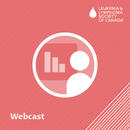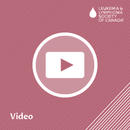Resource Library
Showing 101 to 110 of 333 results
In this presentation, Dr. John Dick, one of Canada’s pioneering scientists in the field of “cancer stem cells”, will explain how his research into the causes of blood cancers holds the promise for improved treatments and quality of life for Canadians affected by blood cancers.
In this "Innovation in Research" webcast recording, you will learn about the community of microbes (bacteria, fungi, viruses and their genes) living within our digestive tracts, known as the “gut microbiome,” and how it can play a role in blood cancer treatment and quality of life.
RNA is more than just DNA's lesser-known cousin. Dr. Katherine Borden, Professor, Pathology, Cell Biology at the Institute for Research in Immunology and Cancer, University of Montreal and Dr. Sarit Assouline, chief of the Division of Hematology at the JGH and Senior Investigator in the Lady Davis Institute at the JGH, unpack the scientific wonder that…
In this 2025 webcast, four scientists funded by the LLSC's AI Catalyst Grant talk about their work investigating how AI / machine learning can speed up discovery and detection of blood cancers in their research work. Moderated by Dr. Paul O'Connell, LLSC Research Program Director.
Multiple myeloma, or MM, is a type of blood cancer that starts in the bone marrow. Multiple myeloma affects plasma cells, a type of white blood cell that normally fights infection, turning healthy cells into cancer cells that can damage blood, bones and kidneys.
Cancer treatments can disrupt sleep. Find out how treatments can affect sleep and what strategies you can use to sleep better.
Immune effector cell-associated neurotoxicity syndrome (ICANS) is a side effect that can happen after some forms of immunotherapy treatment. It may cause you to experience serious neurological symptoms.
Dr. Vikas Gupta, Hematologist at the Princess Margaret Cancer Centre in Toronto, reviewed Myelofibrosis (MF) and the evolution in diagnosis, treatment options and aspects of follow-up care in this 1-hour webcast as part of MPN Conference 2025.
In this 1-hour live webcast, Dr. Sonia Cerquozzi, hematologist at the Tom Baker Cancer Center and Peter Lougheed Centre in Calgary, reviews PV, a type of MPN - its diagnosis, treatment options and aspects of follow-up care.
In this 1-hour webcast, Dr. Lynda Foltz, University of British Columbia, will review this type of myeloproliferative neoplasm (MPN): its diagnosis, treatment options, and aspects of follow-up care.) People with ET have too many platelets, a type of blood cell. Too many platelets can result in a blood clot (thrombosis) forming in a blood vessel.


